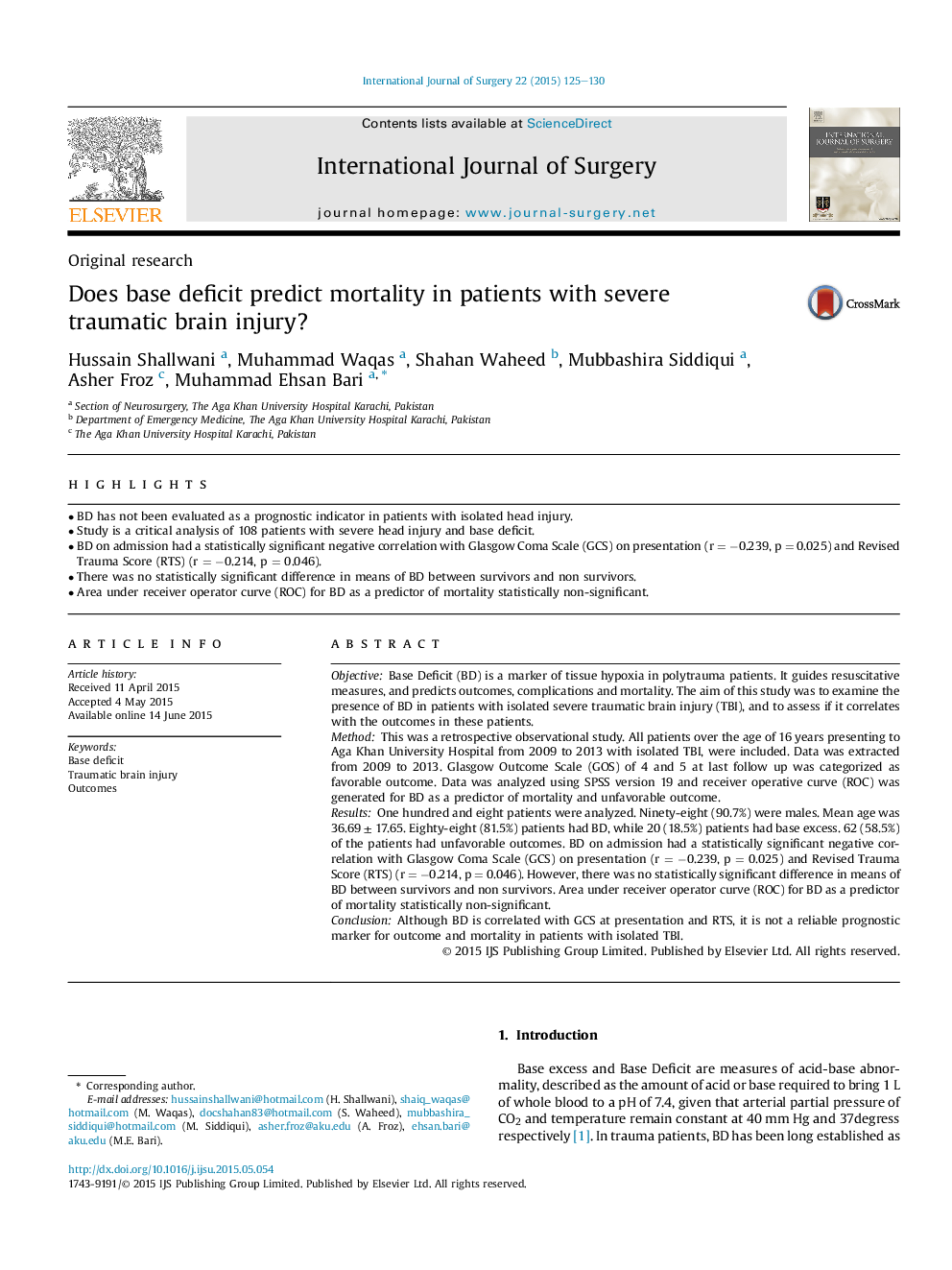| کد مقاله | کد نشریه | سال انتشار | مقاله انگلیسی | نسخه تمام متن |
|---|---|---|---|---|
| 6251419 | 1611970 | 2015 | 6 صفحه PDF | دانلود رایگان |
- BD has not been evaluated as a prognostic indicator in patients with isolated head injury.
- Study is a critical analysis of 108 patients with severe head injury and base deficit.
- BD on admission had a statistically significant negative correlation with Glasgow Coma Scale (GCS) on presentation (r = â0.239, p = 0.025) and Revised Trauma Score (RTS) (r = â0.214, p = 0.046).
- There was no statistically significant difference in means of BD between survivors and non survivors.
- Area under receiver operator curve (ROC) for BD as a predictor of mortality statistically non-significant.
ObjectiveBase Deficit (BD) is a marker of tissue hypoxia in polytrauma patients. It guides resuscitative measures, and predicts outcomes, complications and mortality. The aim of this study was to examine the presence of BD in patients with isolated severe traumatic brain injury (TBI), and to assess if it correlates with the outcomes in these patients.MethodThis was a retrospective observational study. All patients over the age of 16 years presenting to Aga Khan University Hospital from 2009 to 2013 with isolated TBI, were included. Data was extracted from 2009 to 2013. Glasgow Outcome Scale (GOS) of 4 and 5 at last follow up was categorized as favorable outcome. Data was analyzed using SPSS version 19 and receiver operative curve (ROC) was generated for BD as a predictor of mortality and unfavorable outcome.ResultsOne hundred and eight patients were analyzed. Ninety-eight (90.7%) were males. Mean age was 36.69 ± 17.65. Eighty-eight (81.5%) patients had BD, while 20 (18.5%) patients had base excess. 62 (58.5%) of the patients had unfavorable outcomes. BD on admission had a statistically significant negative correlation with Glasgow Coma Scale (GCS) on presentation (r = â0.239, p = 0.025) and Revised Trauma Score (RTS) (r = â0.214, p = 0.046). However, there was no statistically significant difference in means of BD between survivors and non survivors. Area under receiver operator curve (ROC) for BD as a predictor of mortality statistically non-significant.ConclusionAlthough BD is correlated with GCS at presentation and RTS, it is not a reliable prognostic marker for outcome and mortality in patients with isolated TBI.
Journal: International Journal of Surgery - Volume 22, October 2015, Pages 125-130
